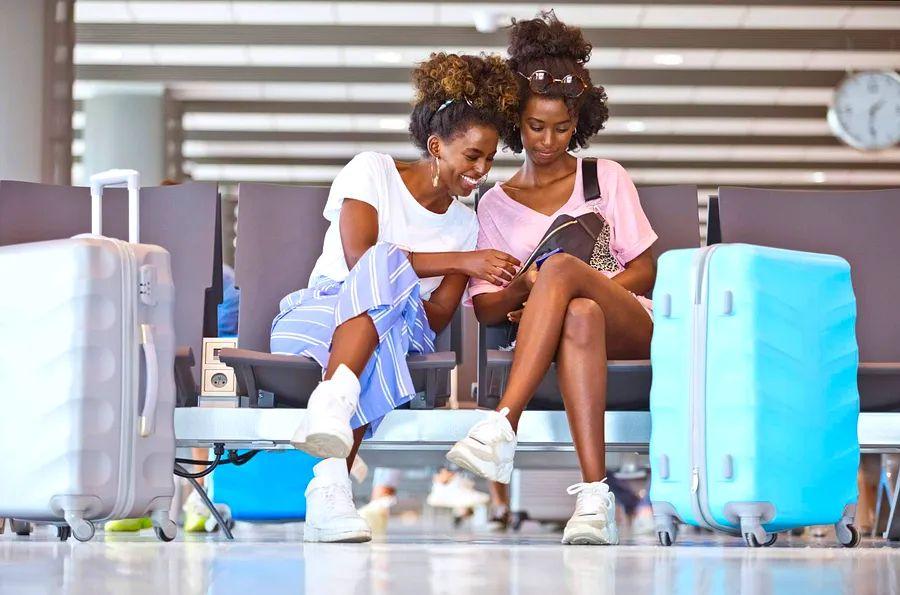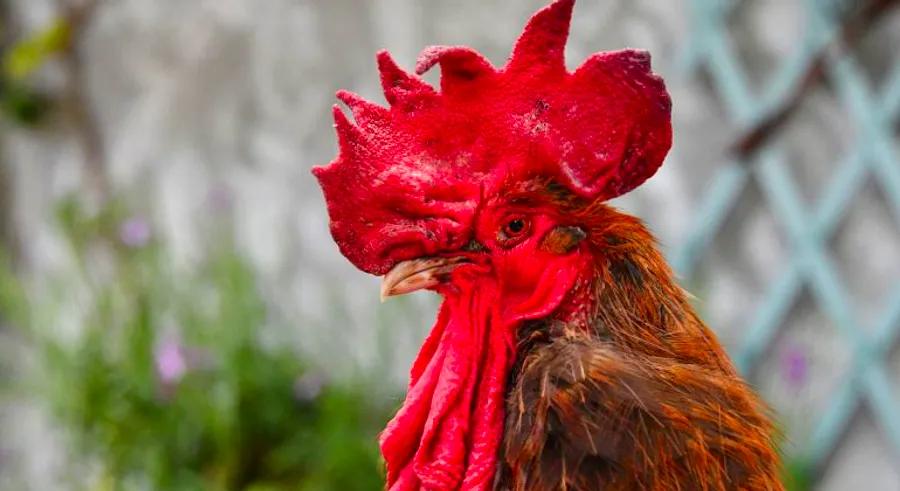What items are prohibited in carry-on luggage?

Many travelers opt for carry-on bags to dodge checked bag fees, avoid lost luggage, or simply to have comfort and entertainment during their flight. However, it's crucial to be aware of the specific regulations regarding what cannot be taken in a carry-on. While some items, like swords, are obviously banned, others, such as scissors, may have varying restrictions. Read on to find out precisely what is forbidden in carry-on bags to help you bypass any stress during security checks or boarding.
Is carry-on luggage guaranteed for all passengers?
In short – not always. While most major airlines and fares typically allow some form of free carry-on, budget airlines and heavily discounted tickets may not. To avoid surprises, I prefer using Dinogo’s Fee Assistant to determine the quantity of carry-on and checked bags needed, ensuring these fees are included in my search results automatically.
You can find it at the top of the flight results page, and it can be modified later among the filters on the left side after the initial results are displayed.
How can airlines determine the contents of my carry-on?

Typically, airlines have no knowledge of what’s inside your carry-on unless you disclose it or show them, either at the airport or during the flight.
During check-in, you usually have to affirm that you’re not bringing any prohibited items aboard, but the airline won’t inspect your bag directly.
The TSA (Transportation Security Administration) or its international equivalents will screen your carry-on (and yourself) as you pass through airport security to identify any forbidden items. Depending on factors like your airline status and membership in expedited screening programs such as TSA PreCheck and CLEAR, the screening process may vary in effort and duration, but everyone must go through it – with nearly all facing the same restrictions.
Bags are first examined by an X-ray scanner and may also undergo additional manual searches by TSA agents. Attempting to sneak prohibited items through can lead to hefty fines and possible legal consequences, so it’s best not to risk it.
Dinogo’s virtual Bag Measurement tool simplifies the process of sizing your luggage, ensuring you arrive at the airport with carry-on bags that meet the regulations.
Simplify the process
Navigating security screenings can be one of the most time-intensive and aggravating airport experiences, but you can follow a few straightforward tips to expedite your passage. Since the TSA enforces strict liquid regulations, it’s wise to keep these items easily accessible in your bag for quicker removal.
While there’s usually no cap on the number of electronic devices you can bring, the TSA often requires these to be taken out of bags for thorough screening – so be ready to swiftly retrieve them as well. Even TSA PreCheck passengers generally must remove all but one large electronic device per bag, with any extras needing to be taken out.
Lastly, ensure all items are out of your pockets (including phones and wallets) and stored within your carry-on bag when going through security.
Prohibited items in carry-on luggage: the top 10 frequently asked questions
Given that the list of prohibited items for carry-on bags is surprisingly extensive, it’s more efficient to categorize them, helping you better understand what to consider before packing.
Remember, the TSA has the ultimate authority over any item, and it’s unwise to argue with agents at the airport, so avoid bringing anything questionable unless you’re ready to lose it.

After you’ve familiarized yourself with the following, take a look at my guide on how to pack a carry-on – for now, here’s what to be cautious about.
1. Firearms
The most commonly recognized category of forbidden items for carry-on luggage is firearms. The rules are straightforward: no firearms are allowed in the cabin as carry-on items. This includes all types of guns, from BB guns to compressed air guns.
Toy guns – including water guns and Nerf guns – are also prohibited, as well as any toy or object resembling a weapon. Flares, ammunition, and gunpowder are banned too. Only accessories such as gun holsters and rifle scopes are explicitly permitted by the TSA.
2. Flammable items
While flammable items may seem as clearly prohibited as firearms for carry-on luggage, the rules are actually more nuanced.
Items such as flammable liquids like butane, chlorine, and gasoline are banned on the aircraft (and in checked bags), as are fireworks and explosive toys like bang snaps and blasting caps.
However, some types of lighters are permitted, along with cigarettes and cigars – though smoking them is not allowed anywhere on the plane.
Dry batteries also fall into this category and can be carried on without quantity limits, but their terminals must not come into contact with any metals.
3. Medical supplies
Conversely, medical supplies are nearly always allowed on flights in carry-on bags, making this one of the few exceptions to the strict rules regarding liquids.
You can even bring a medically necessary oxygen tank onboard, but similar to most medical items, you must remove them from your bag for TSA inspection.
The only medical items explicitly prohibited by the TSA are battery-powered wheelchairs and mobility devices, but these can be checked instead.
4. Sports equipment
Many common sports items are allowed in carry-on luggage, but not all. You might be surprised to find that semi-sharp objects like horse spurs and clamp-ons are typically accepted, but a good rule of thumb is that anything resembling a weapon (particularly a club) is off-limits.
This includes items such as baseball and cricket bats, golf clubs, hockey and lacrosse sticks, and even walking canes.
While you likely won't need to bring a bowling pin on a flight, it falls under the ban on sporting gear that could potentially be used as a weapon. Fishing lures are allowed, provided they don't have large hooks.
The TSA agent will ultimately decide if your hook is too large, so it's safer to pack them in checked luggage if you want to avoid any issues. No martial arts weapons are allowed either.
5. Camping equipment
Similar to sports gear, most camping equipment is allowed on planes as carry-on luggage, but not everything qualifies. Sleeping bags, tents, and even tent poles are permitted by the TSA; however, many of these items may exceed your airline’s size and capacity limits, potentially preventing you from boarding even if you pass through security.
In many situations, you can gate-check these items, but airlines are not obligated to provide this option. Tent stakes are prohibited, as well as bear spray, cast iron cookware, and any size gas cartridges.
6. Household gadgets and appliances
The majority of household appliances will pass TSA security screening, but it’s crucial to ensure they comply with your airline’s size limitations, or you may not be allowed to bring them on board. Even blenders are allowed if the blade is removed, as are hangers, bottle openers, and corkscrews without blades.
As long as you steer clear of items with prohibited parts, like blades or excessive liquids, it’s actually quite rare to find a household appliance that the TSA forbids.
7. Tools
While the TSA specifies certain tools that cannot be taken on planes as carry-on items, such as hammers, drills, and nail guns, the general rule for most tools is quite clear. If a tool measures under seven inches, it is allowed unless another regulation (not specific to tools, like blade guidelines) prohibits it.
For instance, a 6-inch screwdriver can accompany you in the cabin, but a 7-inch screwdriver must be checked in your luggage.
8. Sharp items
The TSA generally prohibits sharp objects in carry-on bags, making it essential to explore the exceptions. Items such as knives (including pocket knives), blades, sabers, saws, and throwing stars are outright banned, but tweezers, nail clippers, pencil sharpeners, and safety pins are allowed.
Knitting and crochet needles are also permissible. Scissors that are under 4 inches in length from the pivot point are acceptable, as are cigar cutters – though the TSA recommends packing these in your checked luggage, as the agent may take issue with them.
9. Food and drinks
As all beverages are considered liquids, they must adhere to the TSA’s volume limit of 3.4-ounce (100 mL) containers, all of which must fit into a single quart-sized bag. If your beverages meet these guidelines, the only drink prohibited by the TSA is alcohol that is 140 proof (70% alcohol) or higher.
Solid foods that do not contain liquid or cream components are allowed in carry-on bags, but be cautious with fresh fruits and vegetables, as they may face restrictions when traveling to certain destinations to prevent the spread of invasive pests.
10. Important note on alcohol
You may have come across travel tips suggesting that you bring small bottles of alcohol, often referred to as airplane bottles, to save on overpriced drinks during your flight. These bottles, typically 1.7 ounces (50 mL), are permitted through TSA screening if they are stored with other liquids. However, there's a significant rule: consuming them on the plane is prohibited.
According to FAA (Federal Aviation Administration) regulations, drinking alcohol on a flight is only allowed if served by the cabin crew, which means your own beverages cannot be consumed. Think of it like a bar—you have to purchase the drinks on board to enjoy them.
Variations in international airports

While TSA guidelines are generally consistent and applied across US airports, other countries have their own regulatory agencies with rules that may differ, especially regarding liquids. Remember that if your itinerary includes international connections, you may need to pass through security again at the connecting airport, and your items will be subject to local regulations even if they were permitted at your origin airport.
Personally, this is where I’ve had items like nail clippers, soy candles, and masking tape confiscated. In such cases, you can either lose the items or go back to the ticketing counter to check them if you have an appropriate container for them.
Variations among international airlines
Airlines can impose additional restrictions that comply with government regulations. While this practice is not common in the United States, international airlines may have more distinct guidelines, so it’s wise to check the specific carry-on policies of your airline before packing.
For instance, while US airlines allow scissors with blades under 4 inches, Turkish Airlines prohibits them. Most security screenings typically do not focus on which airline you’re flying with, so such items might not be flagged prior to boarding, but you could face consequences if they are discovered on board.
Differences in international customs
Although this isn't specific to carry-on luggage, it's crucial to remember that some countries impose outright bans on items commonly used in the United States. Even if you successfully pass through TSA screening en route to your destination, bringing these items into the host country could violate local laws, leading to potential prosecution if caught. Prescription medications often fall into this category, so always consult the customs website for your destination before you pack.
Avoid packing these items
Even after thoroughly reviewing the TSA’s list of banned items and understanding the general rules, you might still be unsure about certain specific items that seem to be in a gray area between allowed and prohibited. While it’s best to simply leave these behind, here are examples of items you might think you can carry on but definitely cannot:
- peanut butter (since it’s not classified as solid),
- a magic 8-ball (because it contains liquid),
- strike-anywhere matches (only safety matches are permitted),
- and Samsung Galaxy Note 7 phones (which are permanently banned on flights and in the mail by the Department of Transportation).
The TSA also recommends against bringing canned foods, even if they’re completely solid, as agents may have difficulty verifying their contents without causing damage.
How this guide was developed
I fly weekly, averaging around 120 flights a year. I strongly believe in enhancing comfort during flights, so I'm well-informed about what can and cannot be packed in carry-on bags, both in the U.S. and internationally. I've merged years of travel experience with expert insights and tools from Dinogo to craft this guide for you.
Some of our favorite flight routes include
- Flights to New York
- Flights to Los Angeles
- Flights to Chicago
- Flights to San Francisco
- Flights to Miami

Are lighters allowed on planes?
Yes, disposable lighters and those containing flammable gas in the lining are permitted in your carry-on, but the FAA restricts it to one per person. If your bag needs to be checked at the gate due to space issues or other reasons, you'll have to remove the lighter from your bag and take it with you on board.
Is it allowed to bring a razor on a plane?
Both disposable and electric razors are allowed in carry-on bags, but razor blades and similar sharp blades are not. If you choose to pack these items in your carry-on, they must be securely wrapped to prevent any injuries to baggage handlers and security personnel during inspection.
What’s the liquid limit for carry-on luggage?
When bringing liquids in your carry-on, they must be in containers of 3.4 ounces (100 mL) or less, and all containers must fit inside a single quart-size bag. This is a guideline for container size, not the liquid itself; for instance, 2 ounces (60 mL) of water in a 12-ounce (355 mL) bottle cannot pass through security. Larger containers should be placed in checked luggage instead.
Is cologne allowed on planes?
You can bring cologne and perfume in your carry-on bag, just like other liquids, as long as the bottle adheres to the 3.4-ounce (100 mL) limit. Luckily, many standard cologne and perfume bottles are exactly 3.4 ounces, so they meet TSA requirements. However, aerosol colognes have stricter rules in checked luggage but still follow the same liquid volume regulations in carry-ons.

1

2

3

4

5
Evaluation :
5/5